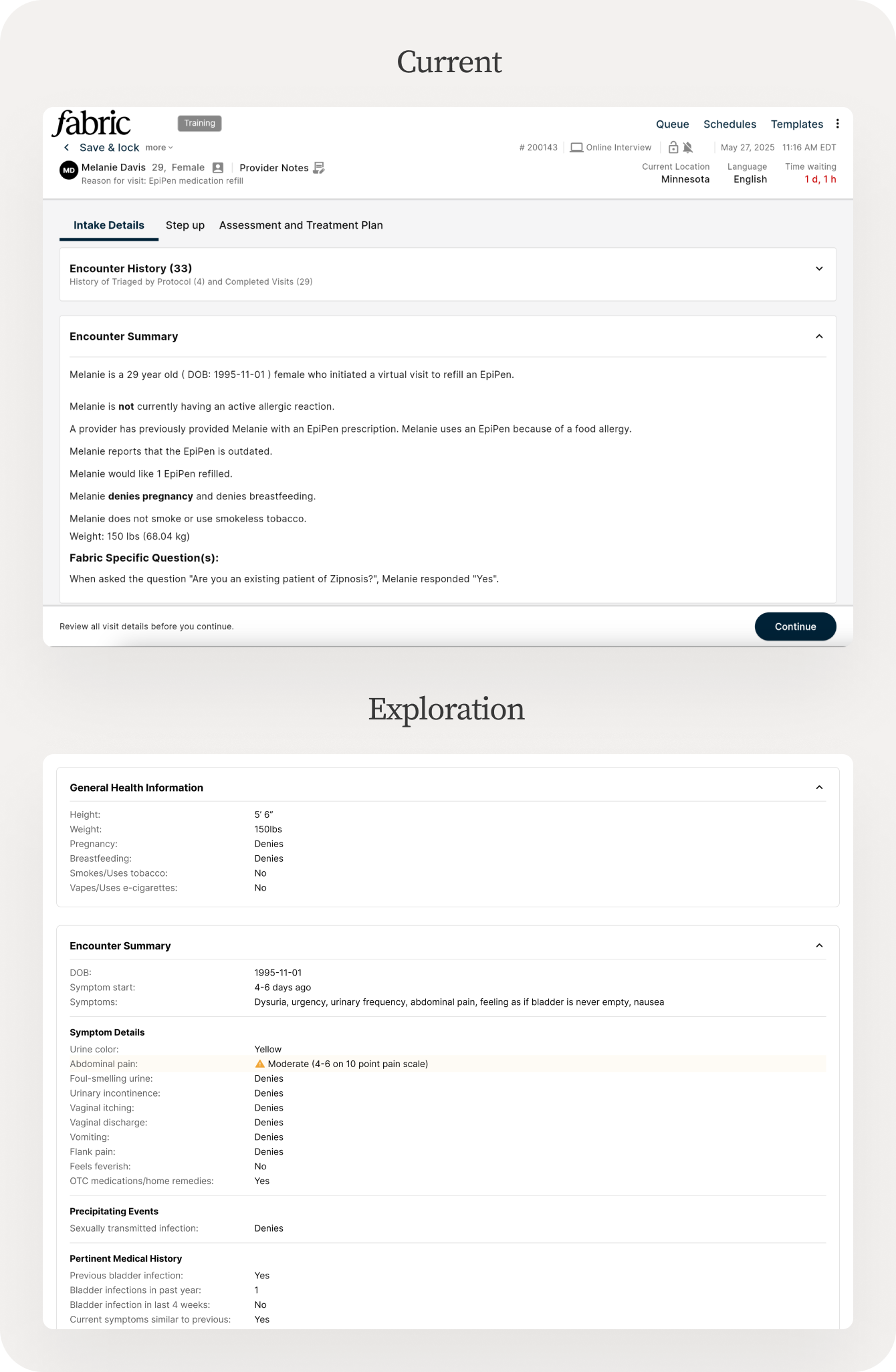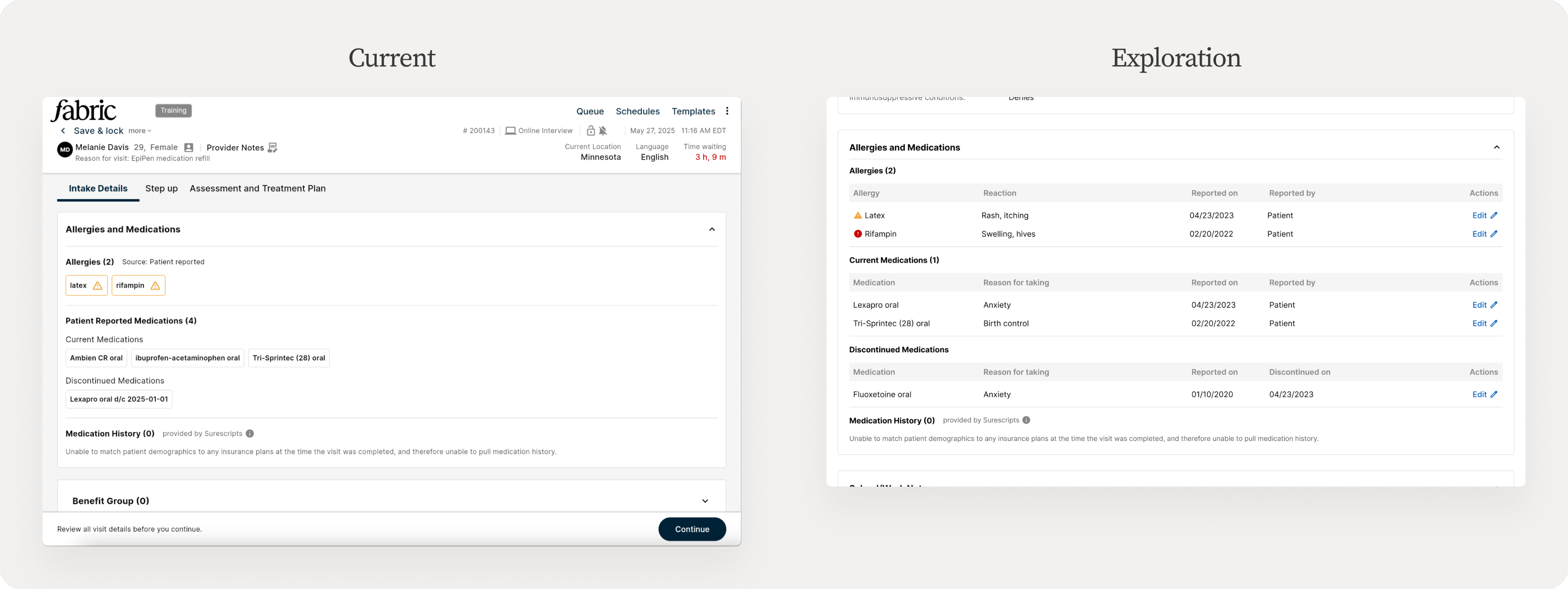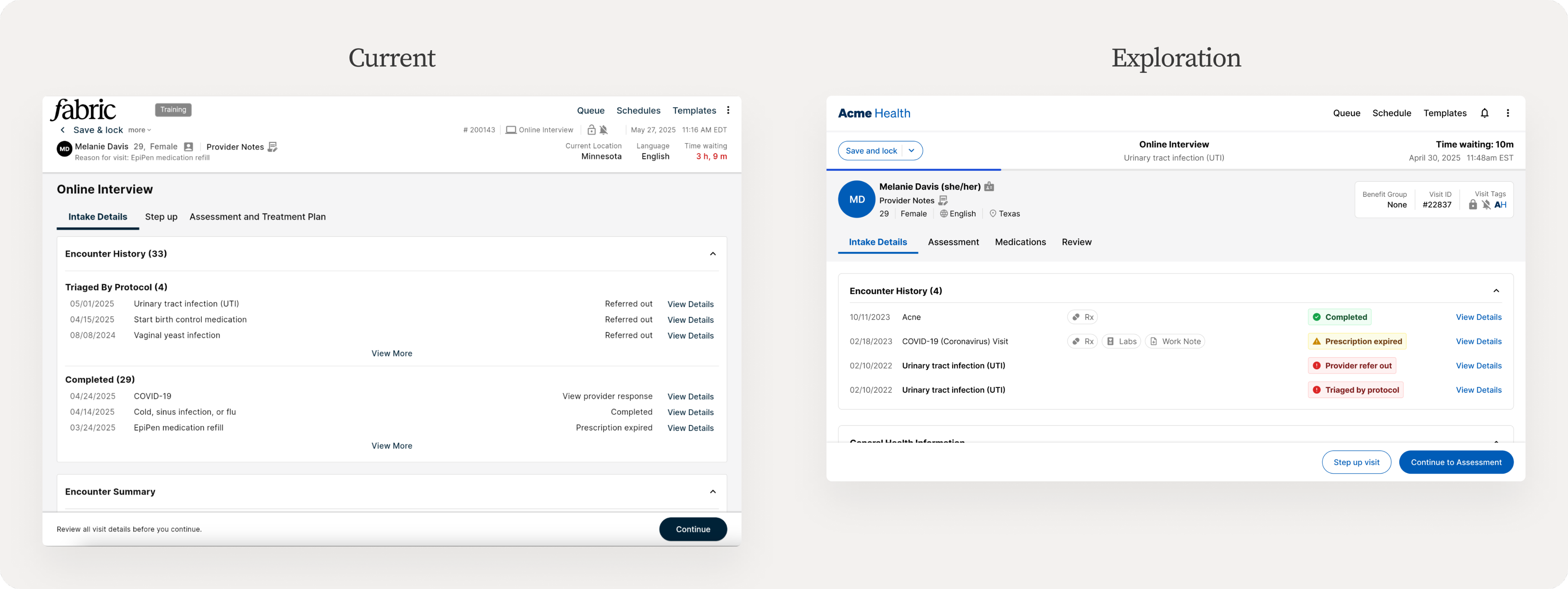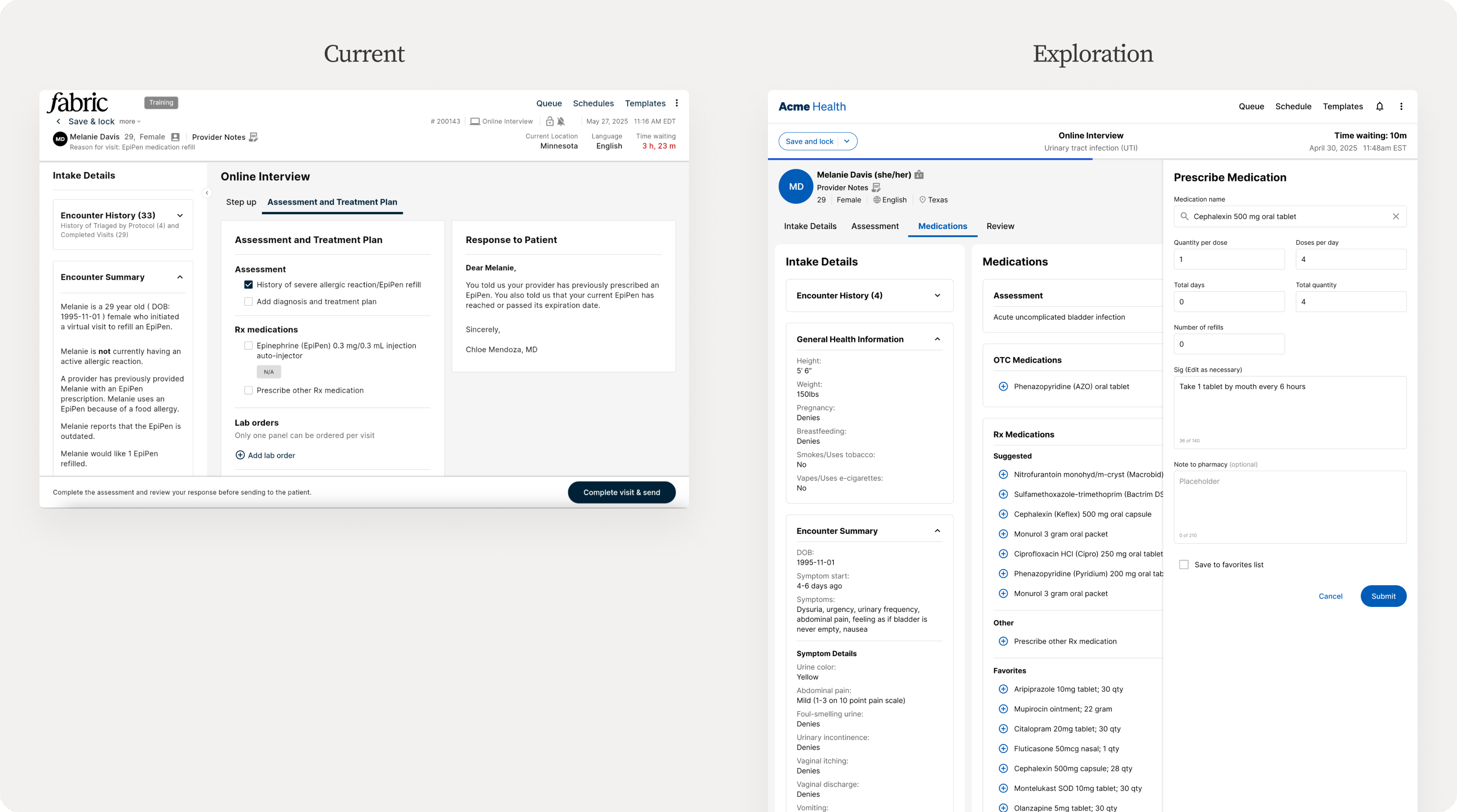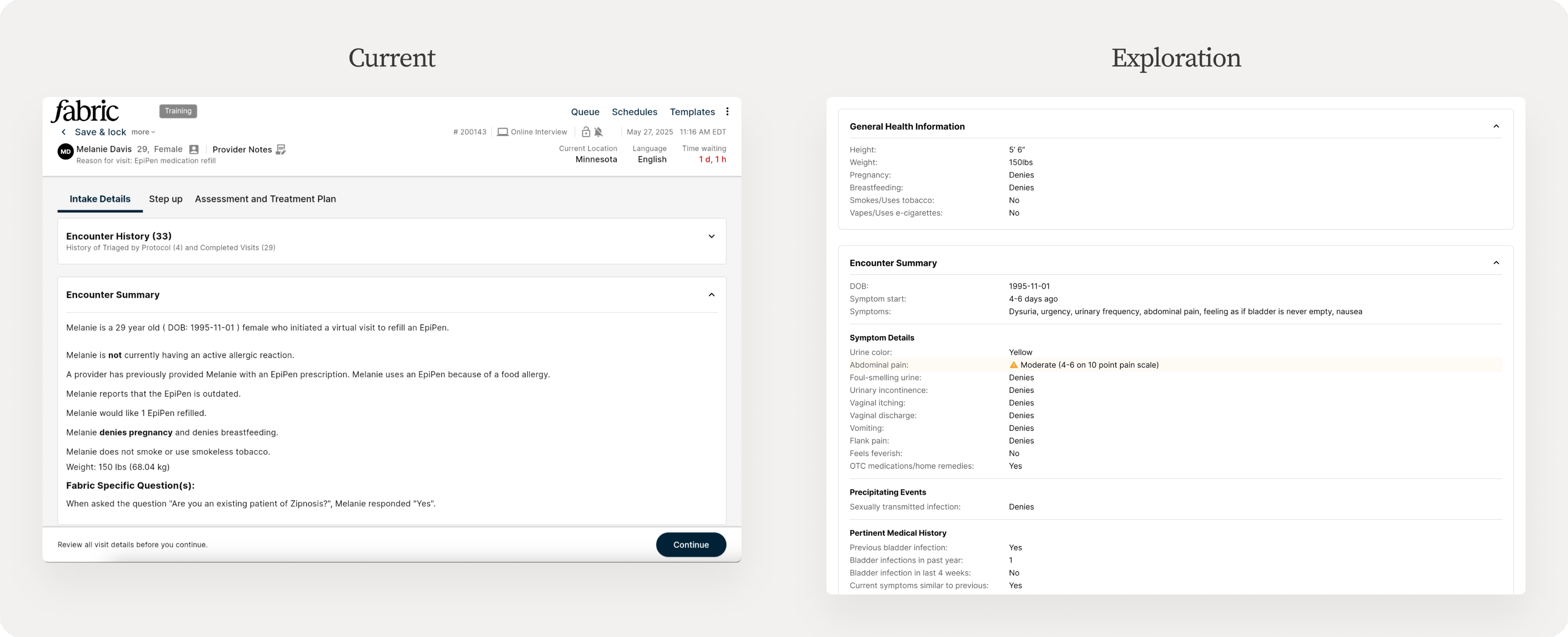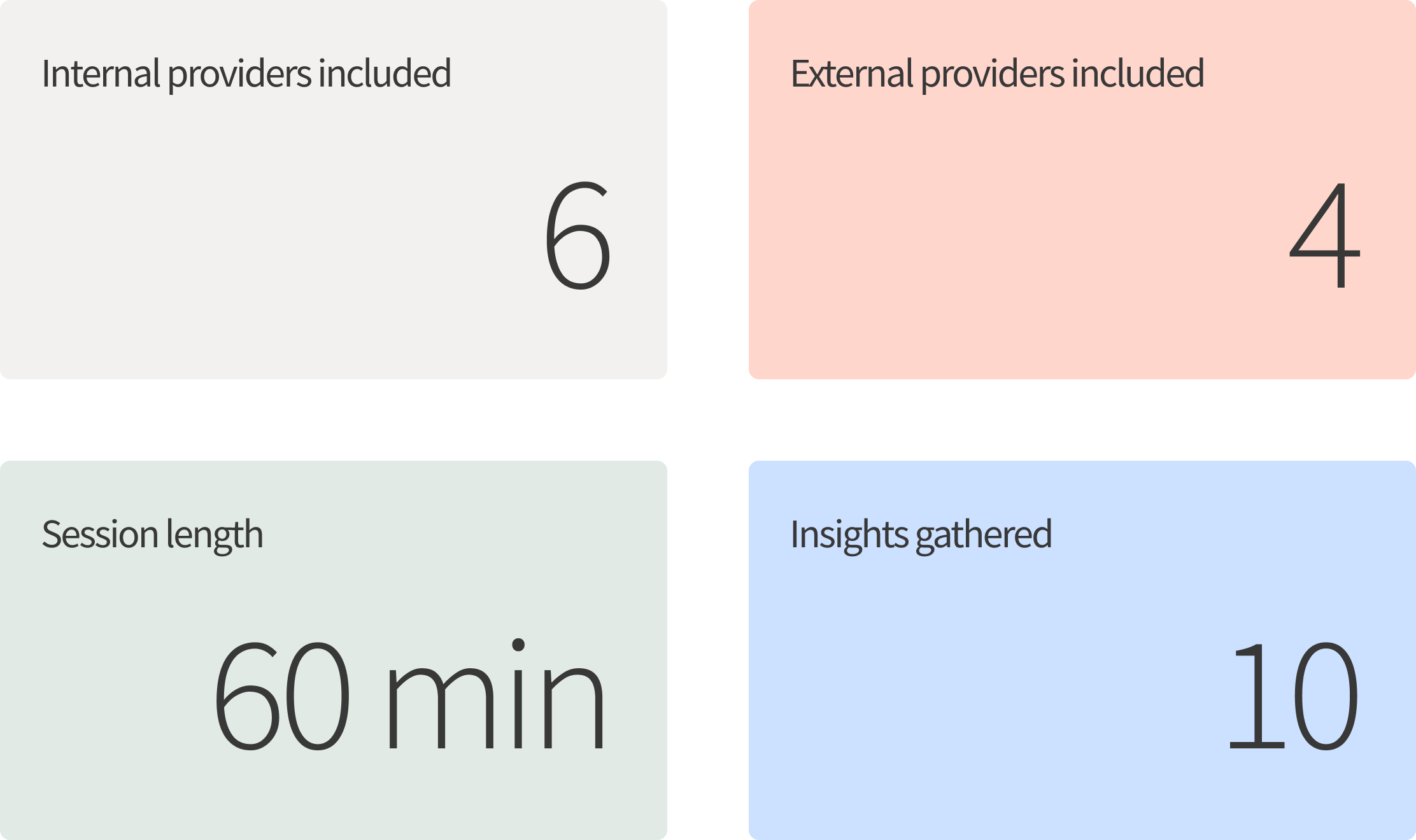
Process & Overview
We met with providers to inquire about workflows, highlights, pain points, competitors, tools, templates, and ideal experiences. From there, I grouped common sentiments to begin to identify problem areas that our real providers experience, to challenge our assumptions about what issues matter most to providers, and to determine focus areas for improvement in the foreseeable future.
This project led to a closer working relationship with our team of clinicians, and from our discussions we were able to create insight themes derived from the feedback, address key bug fixes, and explore blue skies solutions of how our insights might translate into the product.
Insight 01: Bugs and bug-like issues cause frustration
Could we have guessed this? Yes. But with nearly every provider pointing out that at least one of their greatest pain points centered around a bug, it was important to call this out so that action to solve these issues could be prioritized.
Mini-player
The mini-player displays after a video call is completed, making it difficult to complete documentation
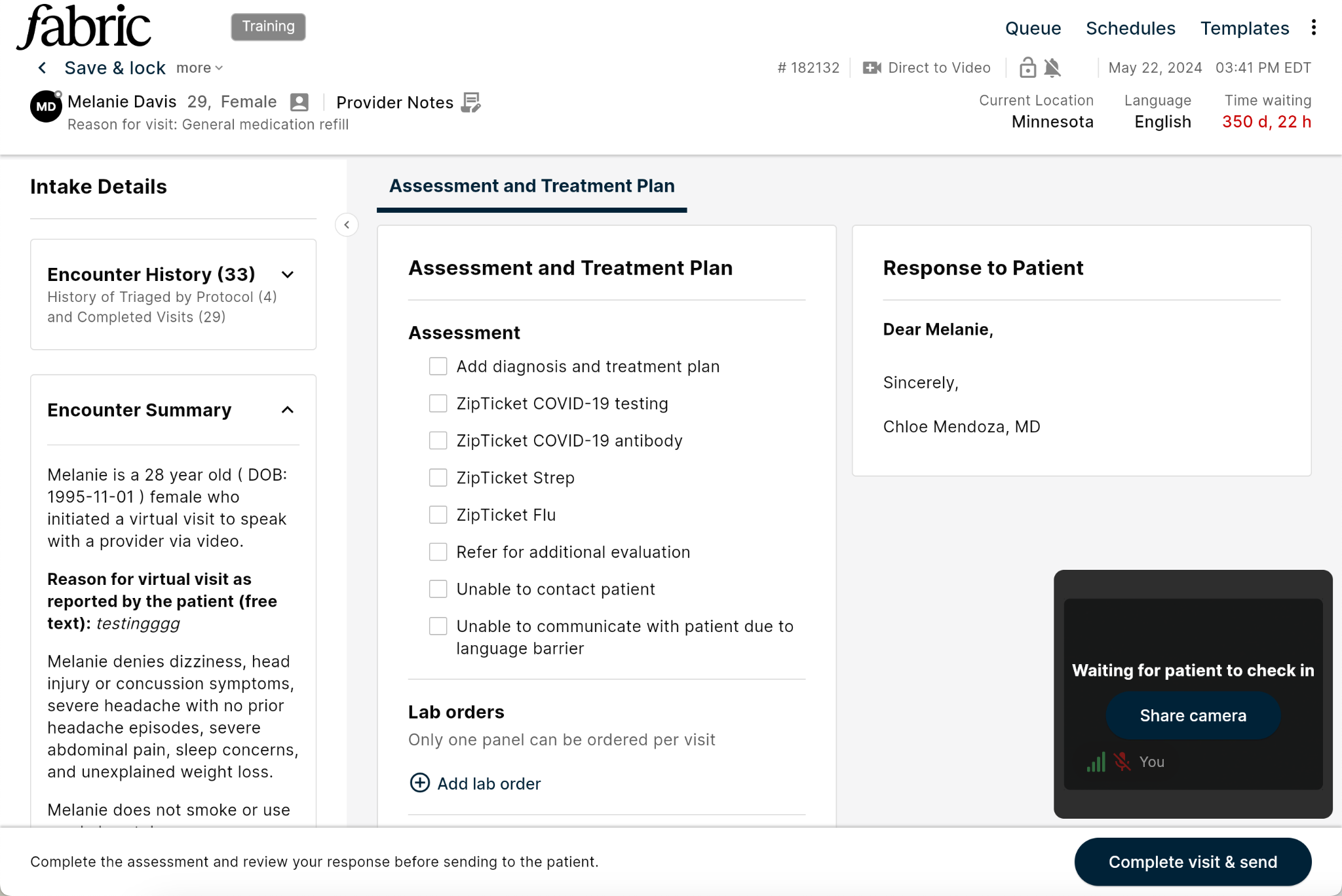
Phone visit notes
The visit notes section for phone visits is not available until after the call has completed
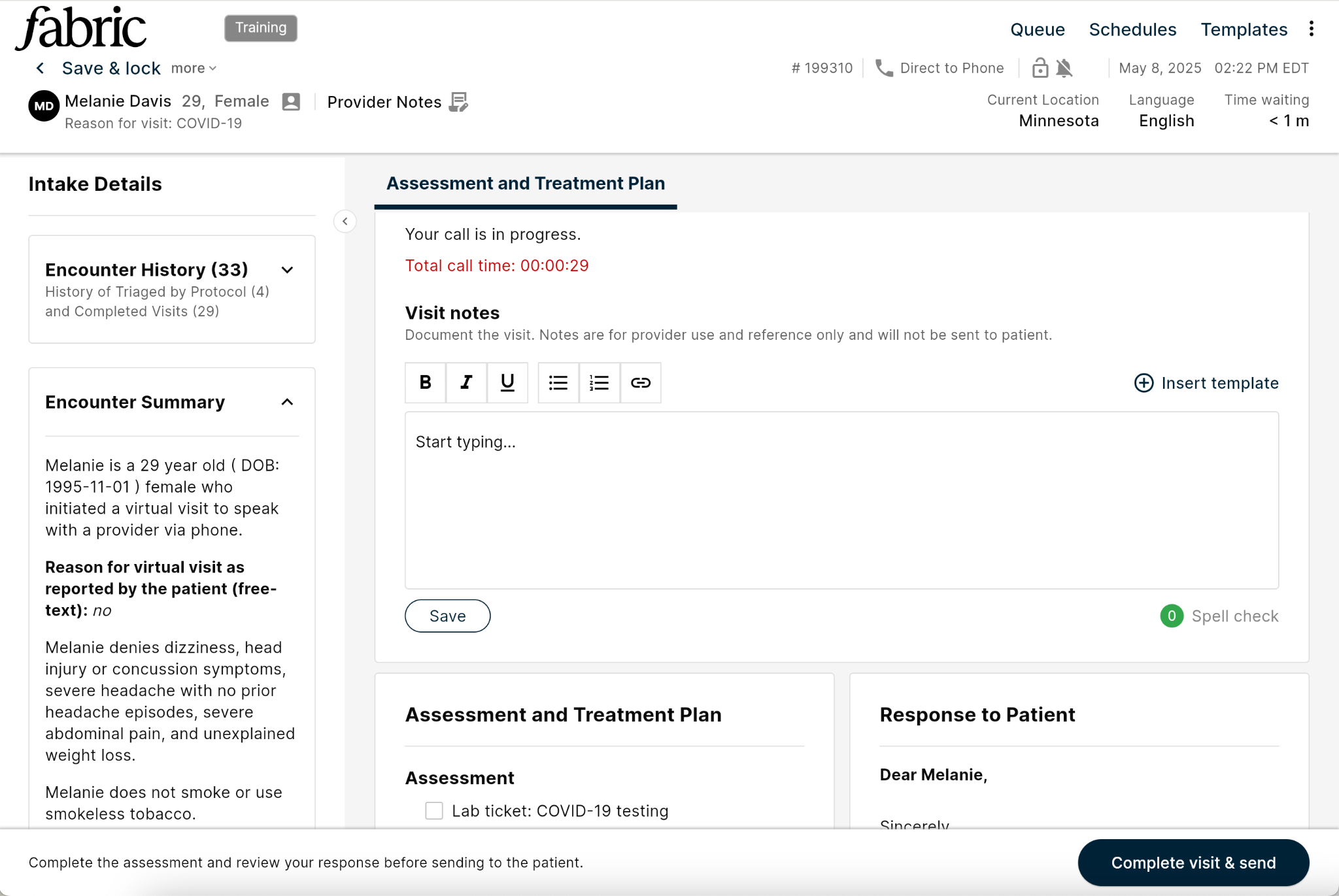
SLA indicator
The time in queue does not keep counting once inside of a visit
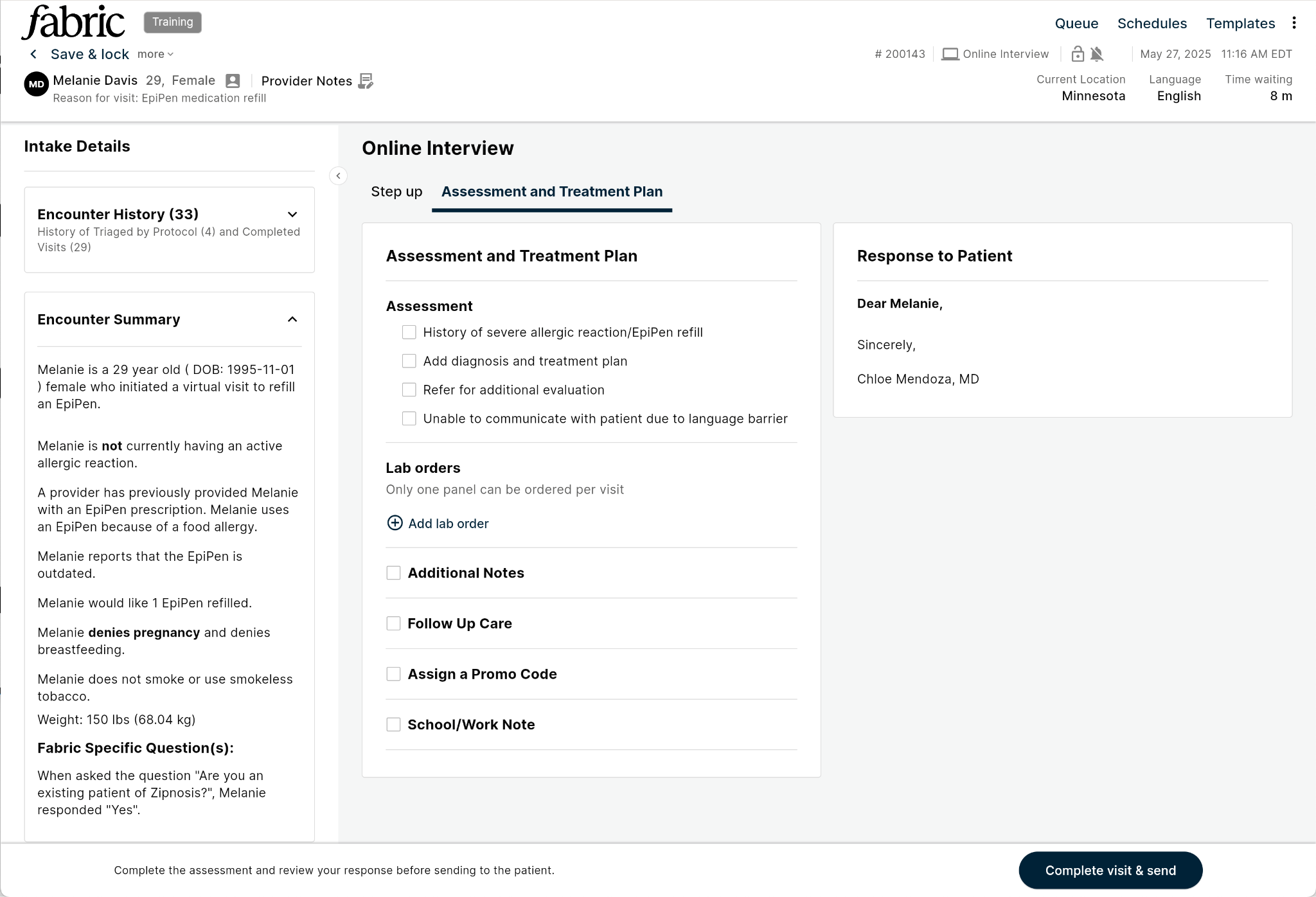
Insight 02: More details about medications, allergies, and medical history would help provide necessary context during intake
KEY FINDINGS
- Including the reason for taking medications would help providers better understand patients’ history of medical conditions and would save providers time
- Including reactions for allergies would help providers better understand classes of drugs to avoid during diagnosis
- Allergies and medications can sometimes be difficult to locate
- Providing an easier way to view visit history will help with understanding the patient’s medical history and help with quicker patient sharing between providers
“You get the whole list of medicines... It would be nice if they were queried with their past medical conditions... You have to deduce them from the medicines or you have to spend time asking them as opposed to reviewing them with the patients.ˮ
“If they’re truly anaphylactic with penicillin, [I don’t want to go that route]. So, with the allergies, it would be helpful to know what the reaction is when they indicate an allergy.”
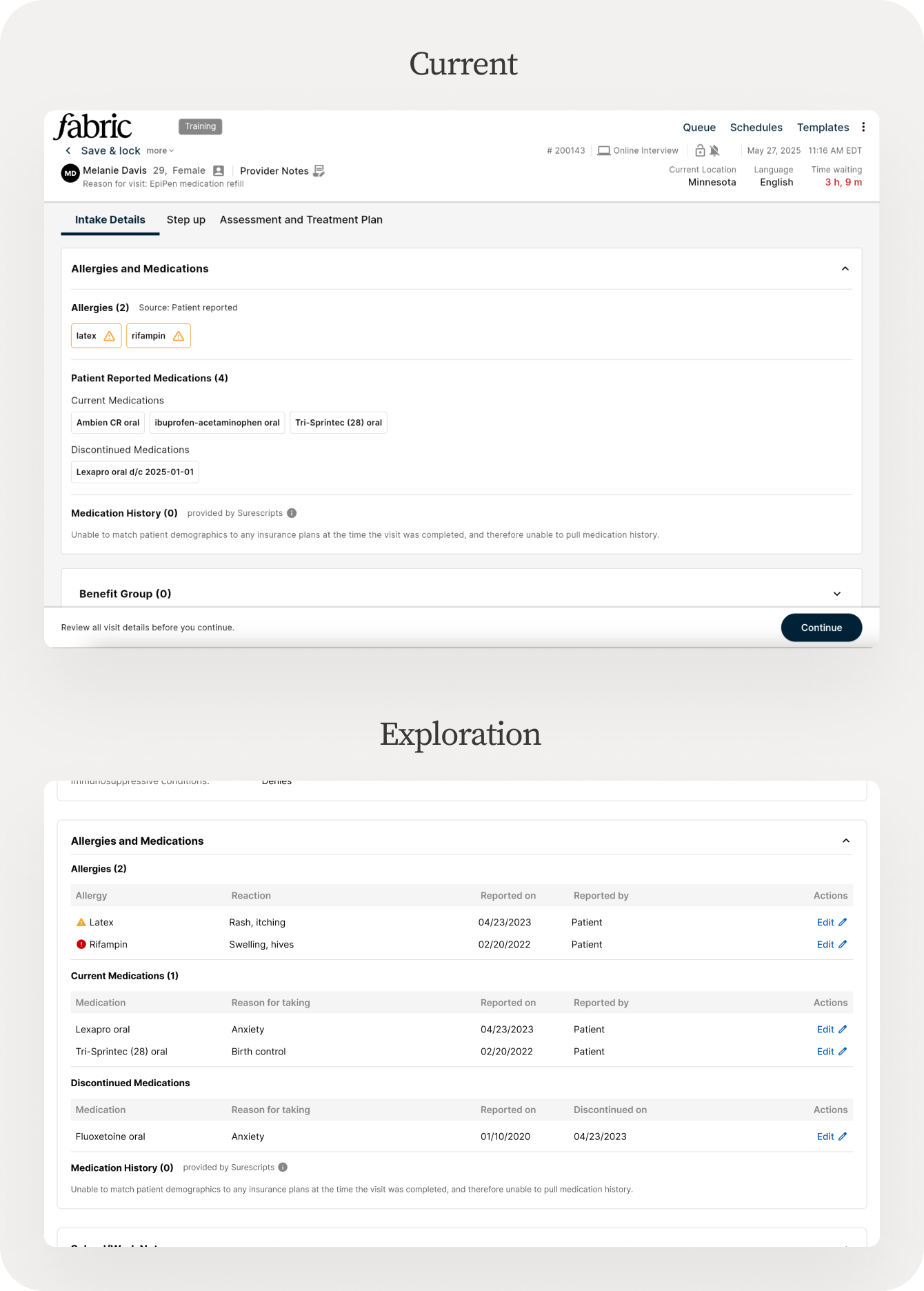
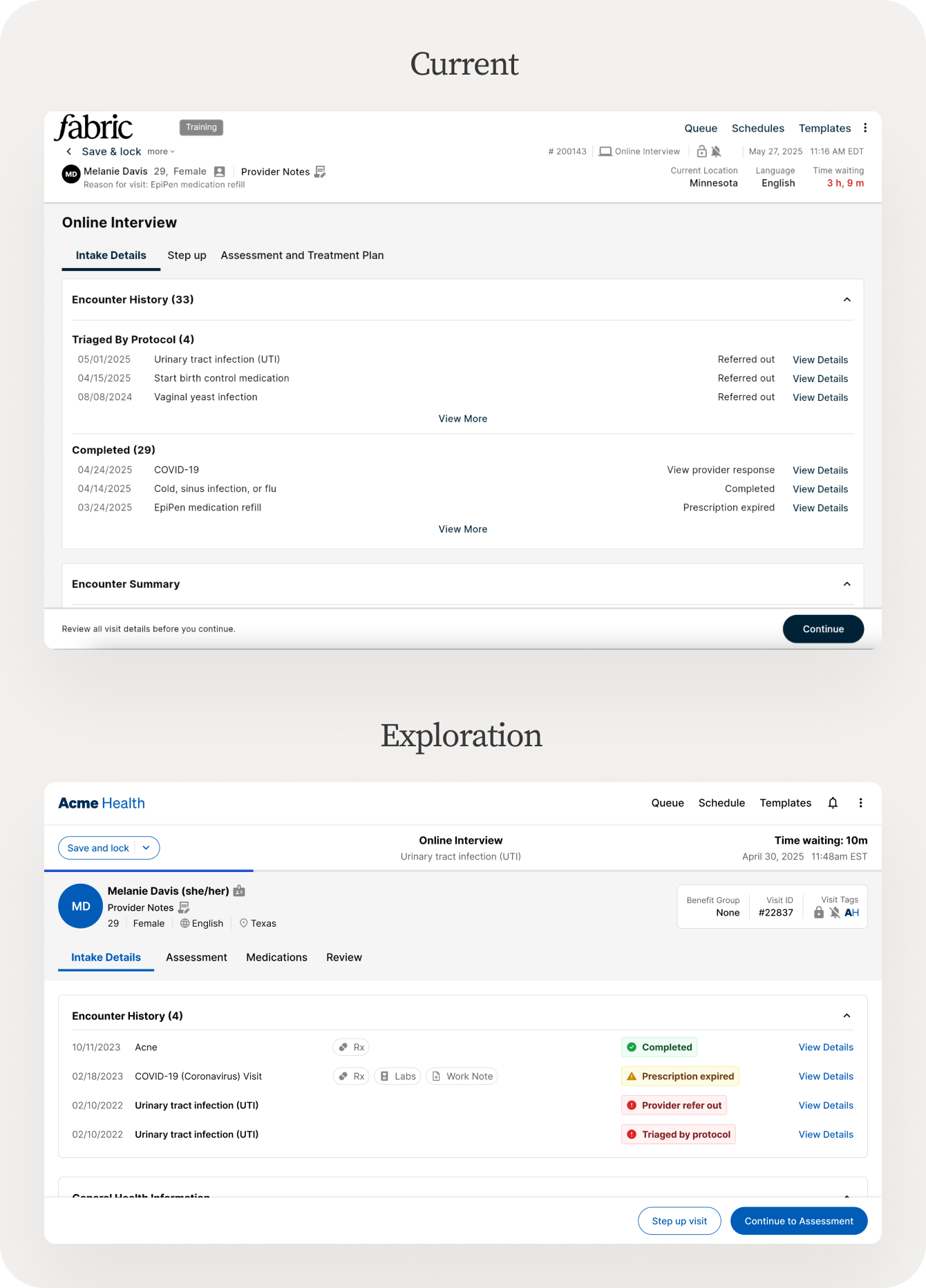
Insight 03: The medication selection process is not on par with competitors
KEY FINDINGS
- Other interfaces allow providers to save “favorite” medications
- The need to input medication strings each time is burdensome and time consuming
- Other interfaces allow for shortcuts to populate the instructions and pharmacy strings
- Medications should be searchable by their brand name in addition to their generic name
- Recommended medications do not allow for changing the dose/quantity/refills/etc.
“There needs to be a favorites list so you can pull from favorites rather than searching and reinventing each drug every time you write it.”
“If I typed in Zofran, nothing would come up. I’d have to go back to the generic name of Ondansetron to bring it up, and then sometimes it… wouldn’t pull up all the different forms or dosages, and it would be difficult to try to get the exact medication that we needed prescribed.”
“I love the pre-populated [Rx medications]... but… probably about 30 to 40% of the time I cannot use the pre-populated one because I need to make one minor minute little change and I’m not allowed to make that change.”
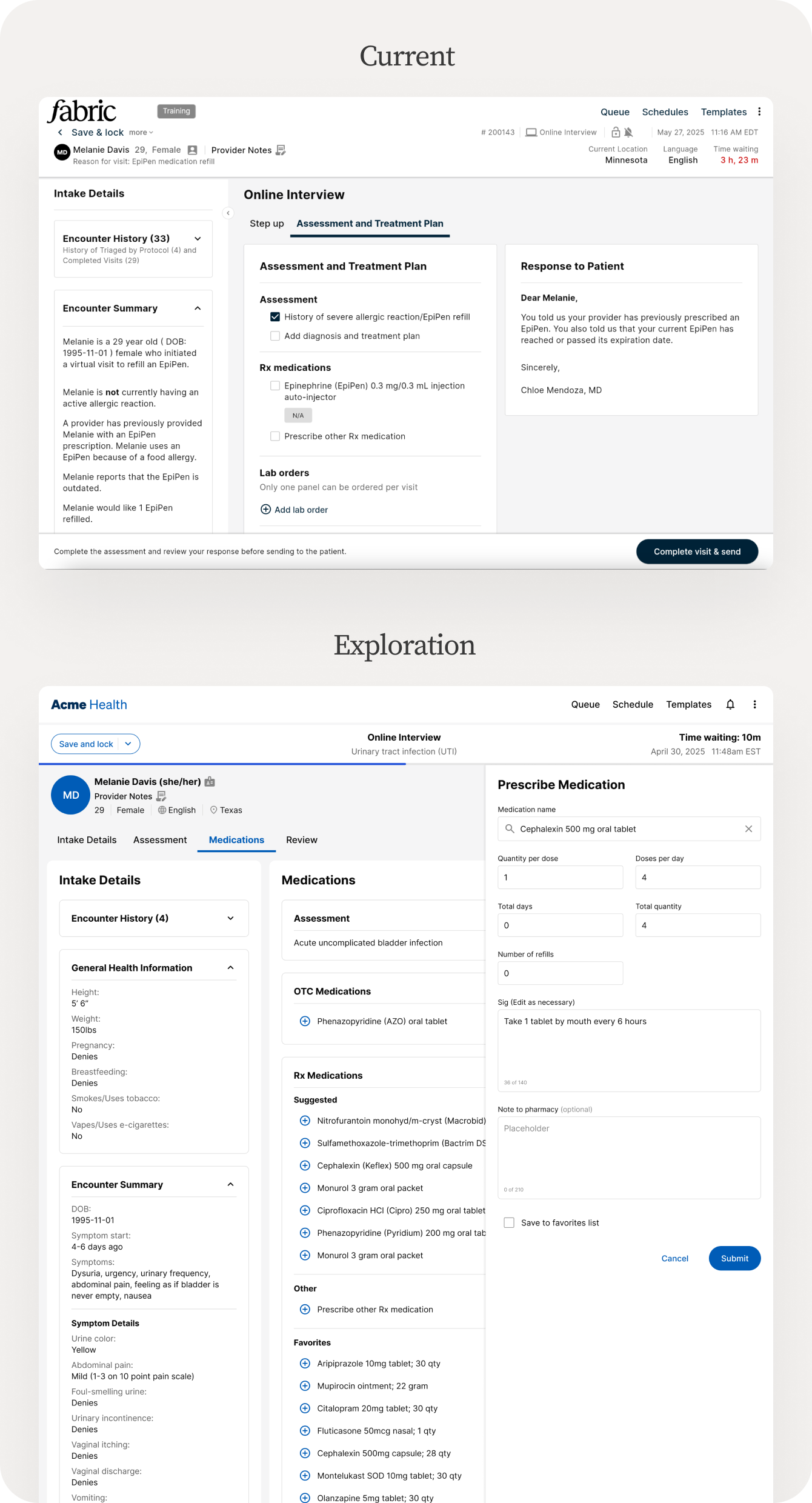
Insight 04: The intake process should be better optimized and integrated into diagnosis
KEY FINDINGS
- Pertinent positives/negatives and adherence criteria should be more clearly called out during intake
- Less protocol-specific intake information could be separated from protocol-specific information for quicker scanning
- Competitors use the data from the intake to generate a SOAP note that is mostly filled out to expedite the diagnostic process
“If it can take the information that’s on the left from the encounter and… essentially populate it immediately into the treatment plan that right there would be perfect… instead of me writing.”
“There are some things that would be… nice… if we could personalize on our own platform… so we don’t have to cut and paste or enter our name and signature block every time with all the license information and all that.”
